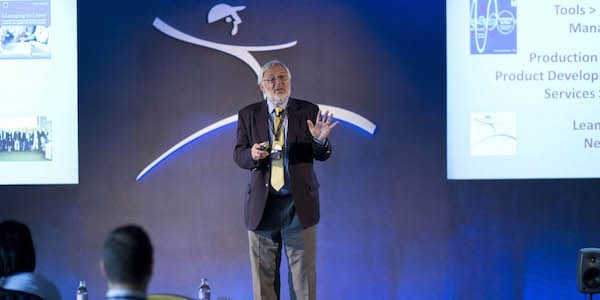
Whittle by whittle
CASE STUDY – This Dutch SME is transforming its picking operation – partly with the introduction of a U-shaped design – to increase the number of orders it can fulfil every day.
Words: Jelle Poldervaart, Operations and Logistics Manager, Outdoor Life Group, with Sanne Carabain, Lean Coach, Lean Management Instituut
During the pandemic, we experienced a boom in demand. When everybody is at home with kids, garden playhouses come in handy! With restrictions all but lifted, the number of orders has now gone back to normal, but the peak in demand we experienced last year taught us a lot about the shortcomings of the process we had in place.
Outdoor Life Group handles over 70 different modules (in a playhouse, these could be a tower or a bridge, for example) in two types of wood – pine and Douglas. That’s 140, and the number of individual parts making up the modules is, of course, much higher. That alone makes for a rather complex process. Furthermore, each order is unique because our DIY designs are modular and 100% customizable.
In 2021, as we struggled to keep up with the orders, we realized there were huge opportunities to improve the way we organized the work. That’s when we reached out to Lean Management Instituut (LMI), asking them to come in and support us as we tried to transform our sawing and picking operations. The team who would focus on this project comprised of a supervisor, a picker/sawer, and myself.
With the help of LMI, we started to map our demand (which is highly variable, both in terms of volumes and seasonality, to the point that on an off-peak month we can have three orders a day while on a peak month we can have up to 120 orders a day). It quickly became clear that the best configuration for our site was a U-shaped cell. Prior to lean, we had two lines – one for pine, one for Douglas – while now we can work with the two types of wood at once. With the new system, a cart can start picking once every 1.20 minutes (one cart representing one order).
We then measured the cycle times for sawing and picking and rearranged the assembly process: we used to saw-to-order all the items in a module, put them on a moving table to take them to assembly, then lift them up and place them on another table for final assembly. The lifting from the first table to second one was clearly waste, so we eliminated that step and started to directly pick the items in the sequence they are to assembled in. That reduced the cycle time for picking and assembly by over 20%: we started with 20 minutes and ended up with just over 15 minutes.
We have also introduced standardized work to make picking easier for pickers and are currently color coding the parts on the shelves. The new system is so easy to understand that within a couple of hours new recruits who join us for the busy season know how to complete the process.

Based on the forecast provided by our client Jungle Gym (for whom we act as a fulfilment center) on what items they sell most, we also reorganized items on the picking line. We categorized them as A, B and C items. A and B are fast-going (we need them up to 60 times a day) and were therefore placed in the easiest locations, while C items (which are used less frequently) were placed on higher shelves.
When it came to sawing, we were batching. We used to cut wood for each order that came in, which resulted in a lot of wasted sawing time. LMI suggested we only saw the parts that we used the previous day to assemble orders. That way, internal orders for the sawing department became much smaller and came in one day for the next. Essentially, we now use the sawing only to replenish parts. This gives us control of our inventory (we need a minimum of two days of stock on the site) and good cycle times in both assembly and sawing (the two departments are now largely independent of each other and don’t need to wait for each other like they did before).
With the new system, we have increased our fulfilment of orders by 50% within normal working hours.
People hold the key to improving a process, but they need to see the benefits of lean before they can comfortably get on board. It’s good to see we are now gradually beginning to understand why lean is a good idea and the great advantages it brings us – namely, the shorter lead-times and the ability to control our stock. LMI taught us a lot about improvement, and we are very eager to test the new system as soon as our demand peaks again. I think that’s when we will really get buy-in from people.
We see a lot of potential for improvement in our site and are excited to see where this journey takes us.
THE AUTHORS


Read more


INTERVIEW – When we say that lean thinking can be applied to any human endeavor, we mean it. In this Q&A we learn about how knowledge sharing has been boosting the improvement journey of Dubai Police.


FEATURE – No healthcare transformation can succeed without a system-wide approach to change. In this article, Dr. John Toussaint, offers his take on the issue, providing a guide for healthcare executives.


INTERVIEW – Dan Jones will be a keynote speaker at this year’s Lean IT Summit in Paris. In this interview, he gives us a sneak peek of what he is going to talk about.


FEATURE – How does visual thinking practically help an organization? The author discusses three different ways in which it can be used to benefit a business and help it to improve itself.

